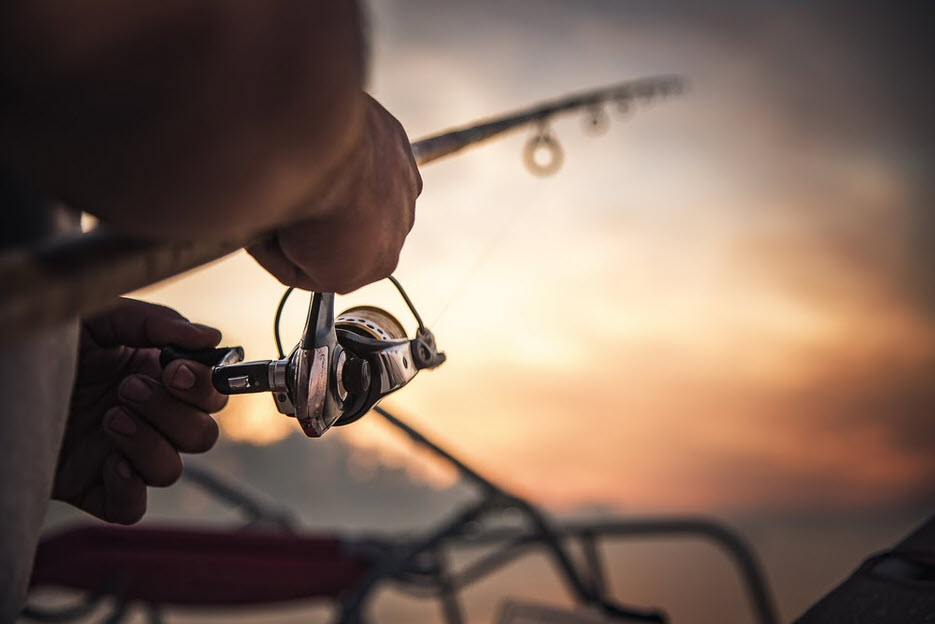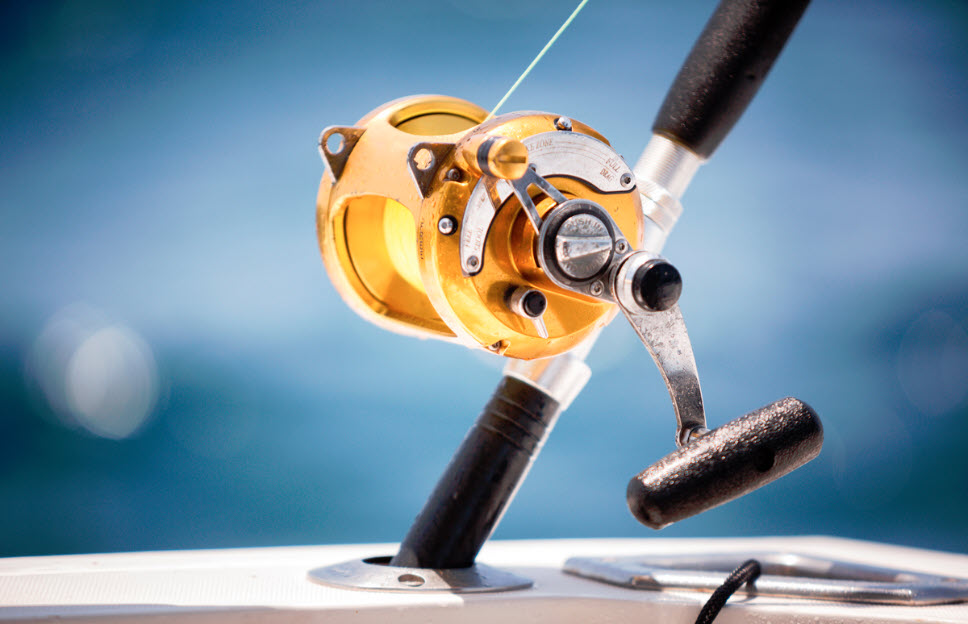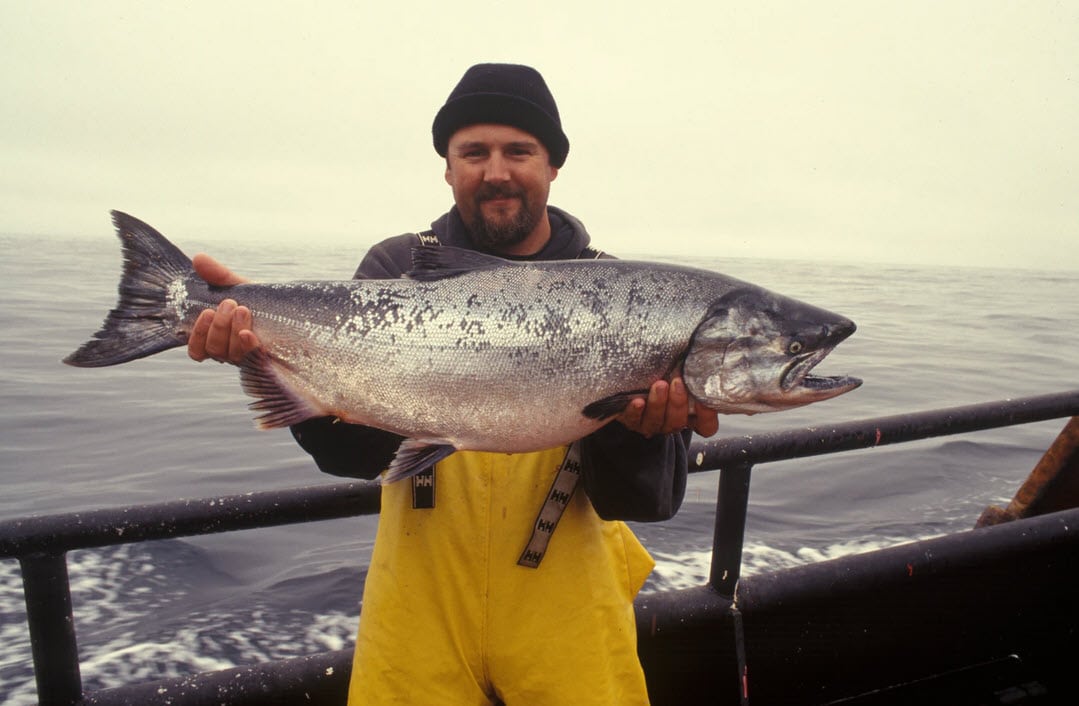
Fishing is one of those hobbies where you don’t want to buy all the gear with no idea. After all, it can be hard enough out there on the water that you don’t want your poor equipment to be the reason you have no bites. If you have an upcoming fishing trip or find you are dissatisfied with the spool you already have, here is a guide to finding the right spool for you.
Page Contents
Understanding every spool options
Before you choose your fishing reel spooler, you need to understand the four options on the market. Some can be used every day for a range of baits and fish types, whereas others are only used when on a specific type of fishing trip. The four types are baitcasting, spincast, spinning and fly reels. Naturally, it is best to only choose one that you have had experience with before, otherwise, you might be committing to something with more or less power than you are trained and experienced in. If you are new to fishing and setting up your kit, get clear on what your intentions and plans are so you don’t choose the wrong equipment that won’t serve you in the future.

Consider your baits
What you are fishing for, and what you subsequently use as bait will determine your choice of fishing reel spoolers. Larger baits, or lures, will require a larger spool to support the weight and shape. Generally speaking, a spinning spool is best for small baits and allows for total control when winding in. For larger baits, bait casters are going to be the better bet. Fortunately, there is a large range in both fishing reel options, and so it comes down to personal preference and budget once you have chosen between the spinning spool or a bait caster. You likely will not have the same bait type and size every time you go out, but the fishing reel will typically give you an idea of how big you can go, so understand what the range is for your chosen reel.
The drag system
Everyone wants an ideal drag system for their fishing reel, anything else will give you some unpredictability out on the water and might even cause you to release your catch. Quality fishing reels will have a drag system that is smooth, responsive and able to be adjusted. Cheap, unmaintained or old fishing reels will not have a smooth drag system and you can actually hear it when you are reeling in. It might be an idea to hire the equipment you intend to buy before you buy it so you can see how it handles and fine-tune your choice based on that trial.
Brand and quality
Like any product for sale, there is always huge variability in quality. That means that there is also huge variability in the output you can expect. Choosing a reputable brand is always going to be the right way to go, as the precision is there and the right materials and engineering have gone into producing a fishing reel that gives the fisher every advantage. Cheap and inferior fishing reels could have the potential to harm your other equipment, like your rod, and that cheaper price point will ultimately be a bigger expense if you have to replace what you already have as a result. There is no shortage of fishing media, YouTube channels and known personalities that you can learn from – so take the time to read reviews and determine what brands are best.
We hope that you have a better insight into what to look for in a fishing reel spool. It can be daunting to enter a fishing store with thousands of products, brands and features – so don’t rush your selection and feel confident to ask all the questions you might have.
Spooling the fishing reel on your own— here are three methods to try!
Now that you know which spool to get, you can prepare for spooling the fishing reel on your own. We should start by reminding you that all fishing lines have some memory. Even if it’s not much, you will notice that some curl will be present when you let the line fall off the spool. If not, you will need to fight the memory when casting the bait, backlashing and batting the line twists very often.
When holding the bait caster with the reel’s opening facing upward, the line will get into the reel, across and under the spool when turning the handle. The filler spool should rotate in the same direction so that the line comes off the top and not the bottom. The principle applies for spinning reels, too, even if the spool won’t spin. Instead of the filler spool spinning, you need to turn the filler spool so that you face the flat side; the line should hang down from the spool’s right side. If done right, the line will come onto the reel the way it comes off the spool.
Whether you use a bait caster or a spinning reel, you need to have some tension on the line as it’s spooled onto the reel. You can slide the non-dominant hand in front of the reel. Pinch the line with your thumb and forefinger to give it some tension. This way, you will remove some of the line’s memory and make the line pull-down tight to the reel while you spool it. It will reduce the occurrence of backlashes and stop the line from cinching down into the spool. If you don’t wind the line close to the spool tight, the line above will cinch down into itself. Please keep reading to learn about our hacks for spooling the fishing reel.

The pegboard method
You can call yourself lucky if you have access to a shop with many pegboards. You can keep several spools of various line sizes on the wall to quickly spool a reel whenever you need. Remember to have the spool oriented correctly, so the line comes off the top. Make sure to have some tension on the line while entering the reel. For one thing, using pegs on a board to hold the line doesn’t need much explaining. Stand close to the wall so the line foes right into the reel. You don’t want to stand 10ft from the wall because you will end up fighting the line when it attempts to pile up on one side.
Knees, feet, toes and legs- method
It’s not the most scientific method to spool the fishing reel, but it’s probably one of the most effective and straightforward methods to spool a rod, regardless of the conditions you’re in. You will need cylinder-shaped items (pen, sharpie pen, rig tool, screwdriver, etc.) and slip them through the spool. If yesterday was “leg day” at the gym, now it’s the perfect time to put all the hard work to the test. It would help if you used your knees, feet, toes and legs to hold the line. Keep in mind to start the spool off in the proper orientation and to have some tension on the line when it goes onto the reel. Basically, you can do it with a pen between your knees to complete the job. This way, you will get the spool out before the reel and reduce the risk of bouncing and modifying orientation.
Throw it in the water
You can spool the reel on your own by placing the filler spool in water. You can either put it in a bowl/bucket of water in your shop or throw it in the water while on the lake. Many people have grown into using this method, but opinions tend to vary. Experienced anglers simply don’t use it because some line spool will sink, which is a complete waste of money.
We need to admit that the resistance of the water will provide some tension on the line, but you need to know when to reel and how fast to do it. You cannot take any chances and the line should come off the spool the correct way. It’s natural for the line to come off the spool properly because it’s the most straightforward method to unspool. If you don’t reel quickly enough, you cannot ensure that the spool will orient itself correctly. On the other hand, if you’re feeling too fast, the spool will basically flip and flop around.
Even if this method is better than simply leaving the filler spool in the bottom of your boat, it does require some practice and skills, especially when compared to the previous methods. Should you have your mindset on this method when using bait casters, remember to have the filler spool rolling in the water with the line coming over the top of the spool. Also, it will spin in the water for spinning reels with the line that comes off the spool counterclockwise.
One last tip
The pegboard is a top favorite amongst many fishers, and the knees method works best when sitting in your boat. If you’re willing to practice and don’t mind a bit of trial and error, we encourage you to try the throwing in the water method. Just remember that there’s always the risk of the reel sinking in like a rock. Regardless of your final choice, use the line’s memory to your advantage and give it some tension when spooling.
Faqs
What is a spare spool?
Spare fly reel spools will let you change setups, switch lines, and stay in control regardless of water conditions. You can buy spare spools from a fly reel. Check out the reel and reel size in a spare spool so that you get a good fit.
Is it necessary to soak the fishing line before you spool?
Professionals recommend keeping the line submerged in a bucket of warm water before spooling with mono. This way, the water will soak into the line when you come to wind the line and allow the line to bed down on the spool.
Is there a specific way for the line to come off the spool?
We recommend you take a look at the front of the reel while you’re turning its handle. Examine the direction the bail arm is turning. When it’s turning clockwise, it puts a line on the spool in a clockwise direction. You should make sure that the line comes off the filler spool onto the reel in a clockwise direction.
Fixed spool reels come in sizes. What sizes are there?
Reel sizes are easy to find out in the catalog number. They can go from 4000 or 450 to 7000 or 800. Make sure to examine the line capacity; the box or the spool should have such details. Beach fixed-spools typically have a 3inches diameter. Remember to get a model with a spare spool.
Is it possible to use braid on a fixed spool reel?
If you go sea-angling, using braid on a fixed spool reel isn’t the best decision. An extensive line diameter will catch more tide and decrease the casting range. As a result, you should only use a braid for shore fishing with a fixed spool reel.







